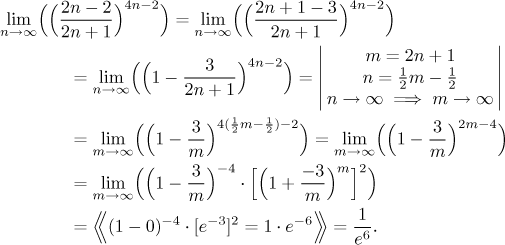This box is about the following fact:
![]()
Note that this problem is of the type
The above fact can be of course used right away if we notice that a given sequence fits this pattern. However, also other sequences can be changed into this form. The most typical type is this:
![]()
There are three "complications" in this sequence and we will show how to handle them. Often one encounters examples with just one or two of these complications, then you can skip the steps that are not relevant and just apply the procedure appropriate to your problem.
Step 1. The first move is to change the ratio in the base into
an expression of the form
![]()
Now we have a form which is more similar to the one in the Fact.
Step 2. The next step is to fix the fraction in the base of the power
so that it has just a variable in its denominator. This is done using
the substitution
![]()
Note that we need
The base now looks exactly like in the above formula.
Step 3. The complication in the exponent is very easy to fix: Use algebra to isolate m.
![]()
The limit of this expression is now easy to find.
Example:

Other problems of this kind can be found in Exercises - Limits.
Next box: sequence in a nice function
Back to Methods Survey - Limits